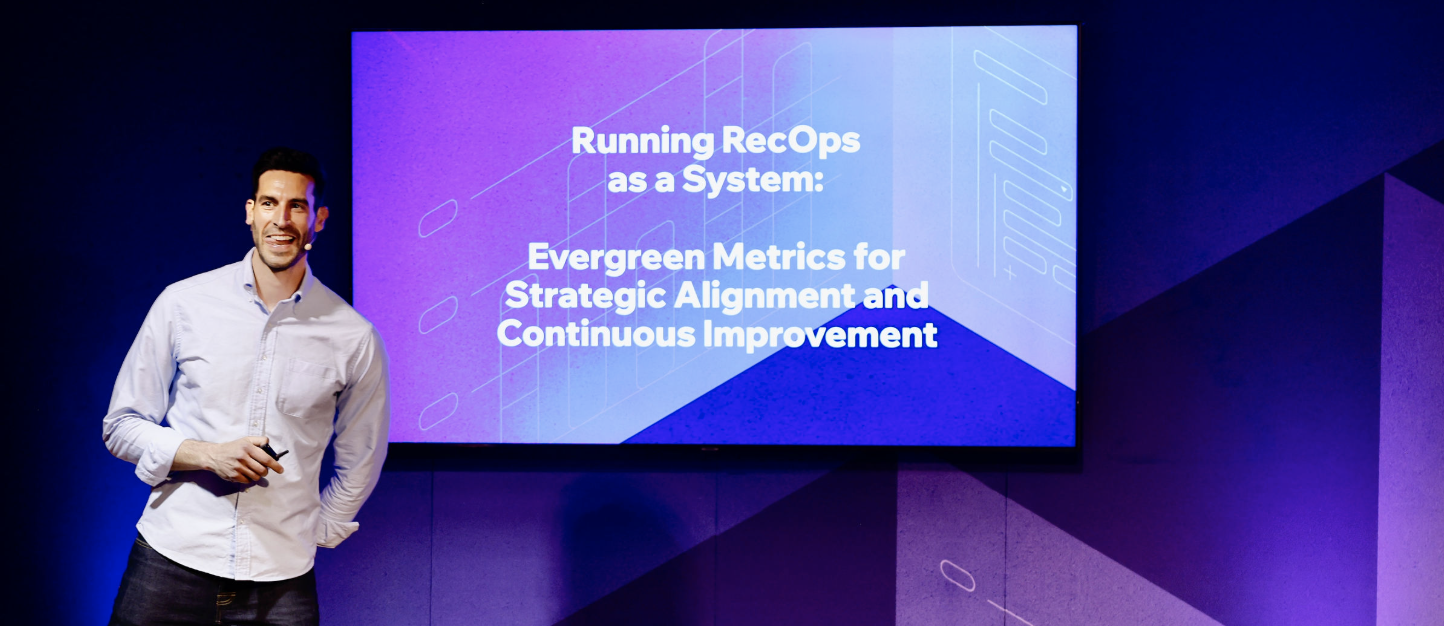Rethinking Recruiting Metrics: A Stakeholder-Centric Approach
This article provides a framework for understanding how various stakeholders weigh different metrics and how to have a holistic conversation about them.

This article provides a framework for understanding how various stakeholders weigh different metrics and how to have a holistic conversation about them. Getting this right gives you more control over prioritizing your time and helps you build a more strategic reputation with the business.
______________________
Recruiting is a system. To deliver successfully, we must understand and balance all its components. Optimizing one part of the system at the expense of others weakens the entire process and leads to suboptimal results.
To shift recruiting from a perceived business cost to a strategic asset, we need to align our efforts with the broader goals of the talent strategy. But how do we measure our contribution and demonstrate that impact to the business?
When reporting on hiring progress, what metrics truly matter? More importantly, how do we ensure the business understands the significance of those numbers? Without clear benchmarks or achievable targets, we cannot accurately assess our progress or determine if we’re on track to meet our goals.
A key challenge in recruiting data is that not everyone agrees on what to measure or understands why certain metrics matter. Each stakeholder has their own priorities, and they might not fully grasp the inputs required to achieve their desired outcomes, and without your influence, will likely land on the wrong conclusion.
What if we could unify and codify our performance in a way that everyone understands?
The Stakeholders of Recruiting
Who are the major stakeholders of the recruiting function? I propose we assess the entire hiring system for measuring impact across Recruiters, Hiring Managers, Candidates, and the Business. Ultimately, we need to understand how to improve the experience and outcomes for each. If we looked at successful outcomes for each, what metrics would you assess?
First, we need to align with our stakeholders on what is most important to them. Even without this conversation, we can predict:
- Recruiters are interested in spending their time with the right candidates and very little time with the wrong candidates, and of course, they need the tooling, processes, and infrastructure in place to achieve both.
- Hiring Managers want to spend time with the right candidates and have a strong partnership with their recruiter. They want someone who deeply understands their hiring needs, the market, and can advise them throughout the selection process.
- Candidates want transparency, a consistent pace, a fair assessment, and feedback.
- The business, which I define as the C-level of an organization, wants high-quality people hired exactly when needed at the best price.
Now that we’ve defined some parameters on what each stakeholder is looking to achieve, let’s discuss why it matters.
Why this matters: Get out of reactionary reporting
Chasing metrics and constantly changing the focus of what matters keeps recruiting teams operating for the short term.
We should not reinvent new metrics or shift our focus based on the current hiring cohort climate. We can’t let single stakeholders dictate our trajectory and impact. Our metrics should work in any hiring environment.
While in hyper-growth mode we may be focused entirely on speed, but we can’t lose the focus on quality and talent density. Similarly, in consolidation mode, we can’t solely focus on reducing costs to the detriment of quality.
The Success indicators
Now that we’ve established why we need a system and the goals of each stakeholder grouping, we can turn our attention to the metrics that align with those goals. This enables us to focus on delivering the right value to that stakeholder.
These proposed metrics below are V1.
Let’s start with the Recruiter. Without the strategic value our recruiters bring, we can’t deliver for the other three stakeholders. I specifically want to know:
- How likely are you to recommend our recruitment processes(and tooling) to other organizations? [NPS 1-10]
- What is the ratio of candidates they need to review to select one for an initial screen?
- How much effort do they need to exert to achieve a single hire?
For the Hiring Manager:
- How likely are you to recommend our recruiting team to other hiring managers? [NPS 1-10]
- What is the ratio of candidates they need to assess to achieve an offer?
- How many business interview hours do we need to achieve a hire?
For the Business:
- How many hires were delivered by the target start date?
- What is our spend per hiring point?
- What is our quality of hire?
For Candidates:
- How likely are you to consider COMPANY again as your future employer? [NPS 1-10]
- Time to hire - how many days were there from the start of the process to offer accepted?
- What is the offer acceptance rate?
The HERO index
We can now roll up all of these metrics into a unified framework. I’m calling this the HERO Index. HERO stands for Hiring Efficiency, Results, & Outcomes.
The beauty of this system is its evergreen nature. These metrics should always matter to each stakeholder. Not a single stakeholder is going to want to decrease efficiency, increase spend, add a bunch of friction, or miss hiring targets.
As a Recruiting leader, I now know exactly what is important to my stakeholders and how we are performing. I now have complete confidence in the conversations we need to have with our internal business stakeholders.
I’ve empowered my internal team to improve the recruiter experience, so they can deliver even better results moving forward.
We can now have scenario-based planning sessions that show the impact of adjusting one metric in favor of another. Our team can have a unified vision on how our individual metrics impact the whole system and if we reduce in one area, we can still celebrate the overall result.
How to set your HERO Index up
Here is a spreadsheet you can use to get started. I have included spreadsheet instructions in Column L.
To start, you’ll need to weigh each stakeholder bucket. You need to allocate 100% total across the four stakeholder buckets. Do you want to give each of the four groups 25% and consider them of equal importance? You might decide the business and candidate buckets should be weighted at 30% each and the other two at 20% each.
From there, within each bucket, give the appropriate weighting to each metric. If they are all equal, take the top grouping percentage and divide it by the number of metrics. If the stakeholder category is 30% overall and you have three metrics for that grouping, each could be weighted at 10% of the overall metric or your own preferred variation.
Next, you’ll need to set up Minimum (worst case) and Maximum (best case) targets for each metric. The low threshold number is the absolute worst result you’d expect to achieve, and the high being the ceiling on the best achievable result.
By aligning up front, you can help drive the correct narratives and make sure everyone understands there are always tradeoff decisions to consider. This will enable you to shift away from cost/spend conversations with the business as you are asked to do more with less. This will also enable you to shift away from reporting on hires per team member and instead drive the conversation to outcome and impact achieved.
Tracking progress
The ideal cadence for reviewing metrics is monthly or quarterly. Reviewing at a consistent cadence will give you a trend analysis to compare previous results to your current state. You can also leverage some of the leading indicators to give you an idea of trends ahead of time.
After you get everything set up, you’ll have your very first HERO Index! If your HERO index is close to 100% you might not be setting high enough targets.
If you’ve made it this far, I hope I’ve encouraged you to powerfully leverage your metrics to support, enable, and ultimately drive success for all of your stakeholders. Each one plays a part in the bigger picture, and it’s through their collective success that we drive the success of the whole.
It’s time to shift from reacting to the hiring climate to consistently delivering value. We’ll do this by aligning with stakeholders, guiding them through the narrative, and showing the tangible results we bring.
